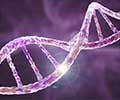The lack of commercially available reference materials has hindered the research dealing with gene mutations in methyl CpG binding protein 2 (MECP2) being linked to Rett syndrome

The samples were sent for DNA sequence and deletion/duplication analyses (using MLPA, semi-quantitative PCR, or array) to College of American Pathologist–accredited clinical genetic testing laboratories, and each sample was tested in between two to five laboratories. The investigators found that the results were concordant among laboratories and assay platforms.
"The panel of 35 publicly available genomic DNA samples developed and characterized as part of this study contains a wide variety of point mutations, deletions, and duplications in both male and female samples that can be used by clinical laboratories to ensure the quality of Rett syndrome testing," asserts Dr. Kalman.
Point mutations or deletions/insertions of the MECP2 gene, which regulates aspects of brain development as well as the expression of other genes, were discovered to be associated with most cases of RS in 1999. However, since there are still no FDA-approved assays for Rett syndrome, laboratories have developed their own tests but need reference materials to standardize their techniques, validate assays, and meet regulatory and accreditation requirements. Ideally, the reference materials should be well characterized and contain the variants most commonly seen in RS patients.
"The availability of a renewable source of characterized reference materials for Rett syndrome will help to ensure the accuracy of these genetic tests and facilitate research and test development," comments Lisa Kalman, PhD, of the Division of Laboratory Programs, Standards, and Services at the Centers for Disease Control and Prevention.
"Molecular diagnosis of Rett syndrome is performed by examination of patient DNA for MECP2 mutations using a variety of molecular diagnostic methods," explains Dr. Kalman. "Genetic testing can help to confirm or establish the diagnosis of RS, especially when patients are young and the phenotype may not be completely apparent. Testing may also be important for at-risk relatives, prenatal diagnosis, or evaluation of an embryo prior to implantation during in vitro fertilization."
Advertisement
Advertisement










